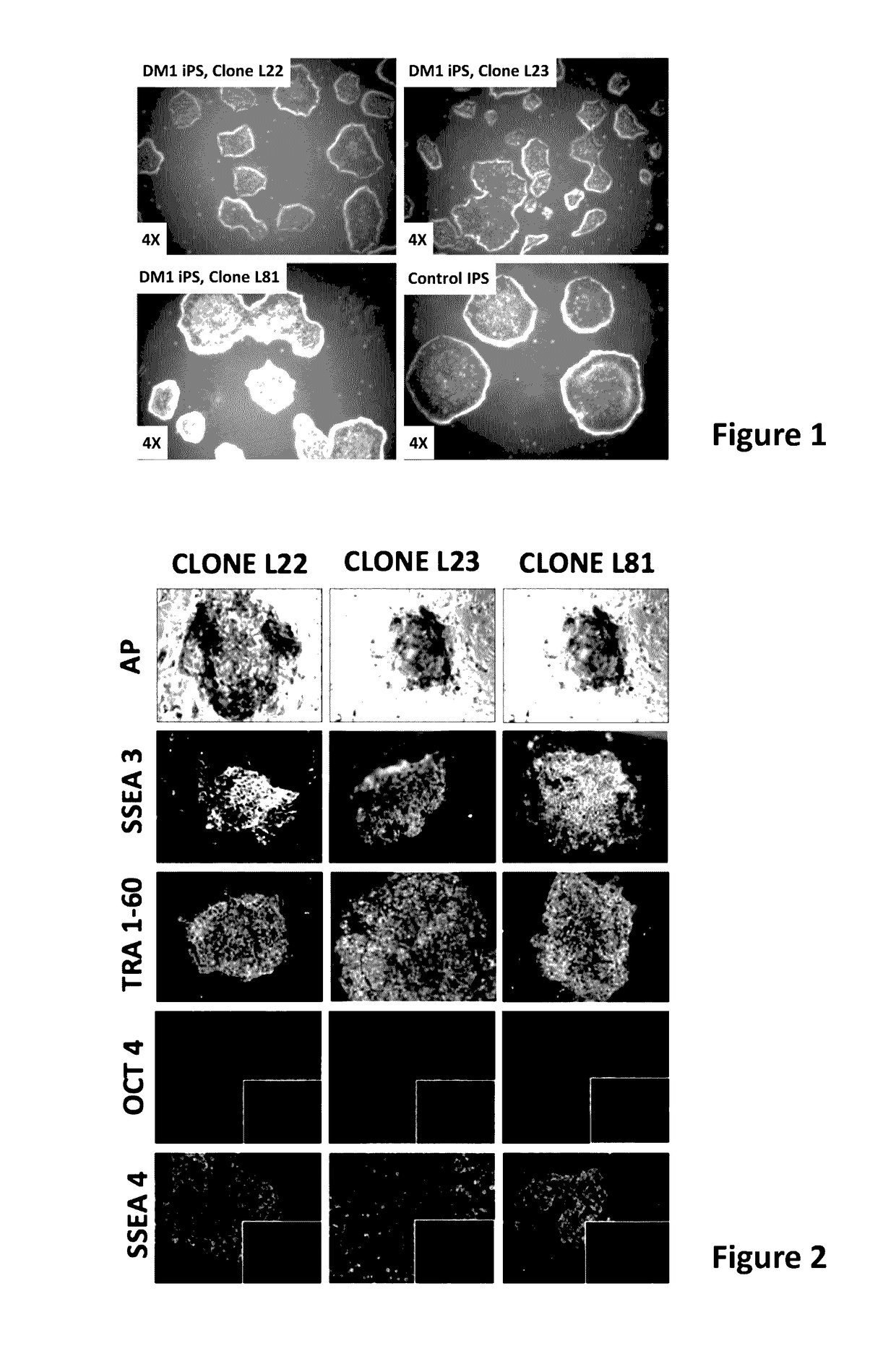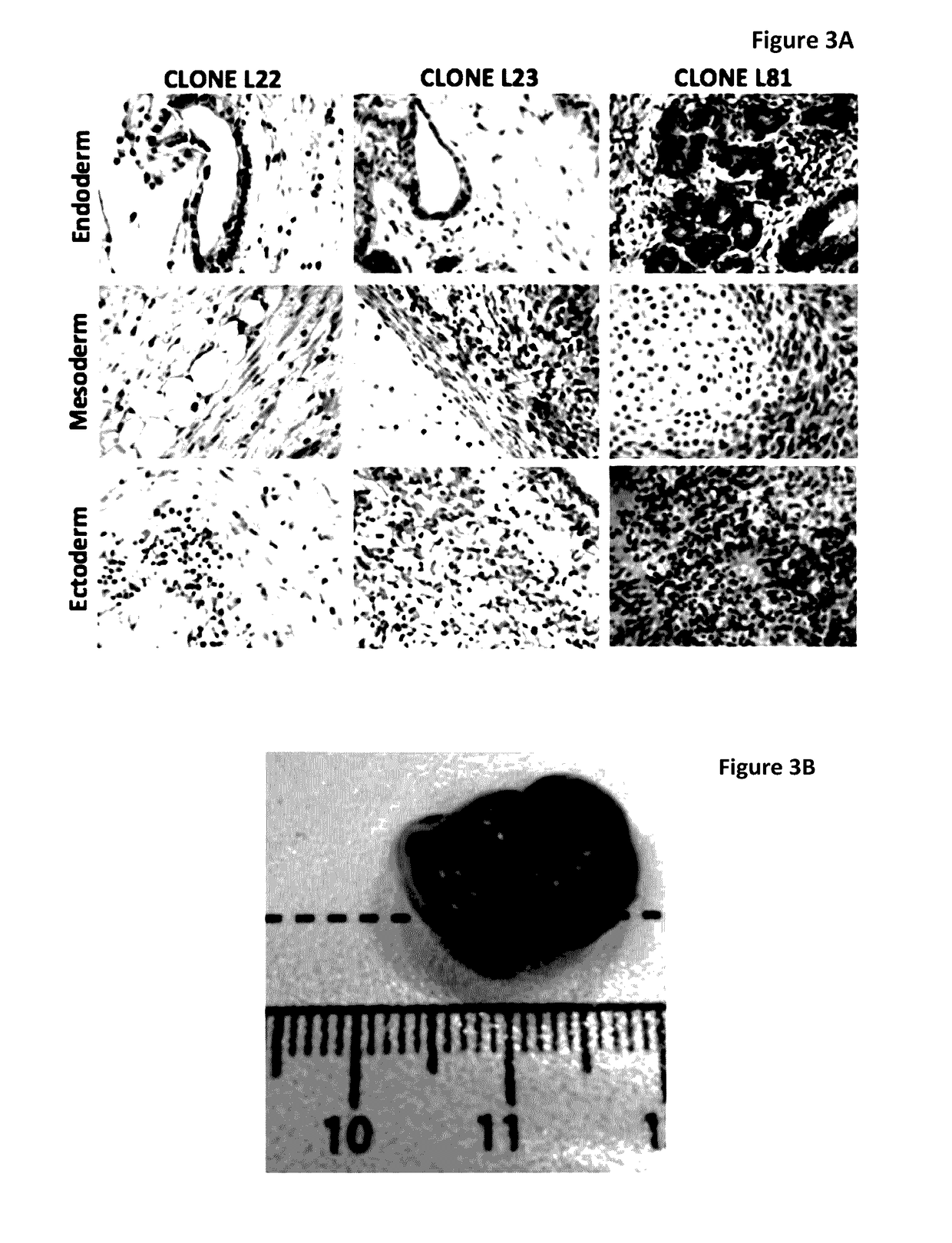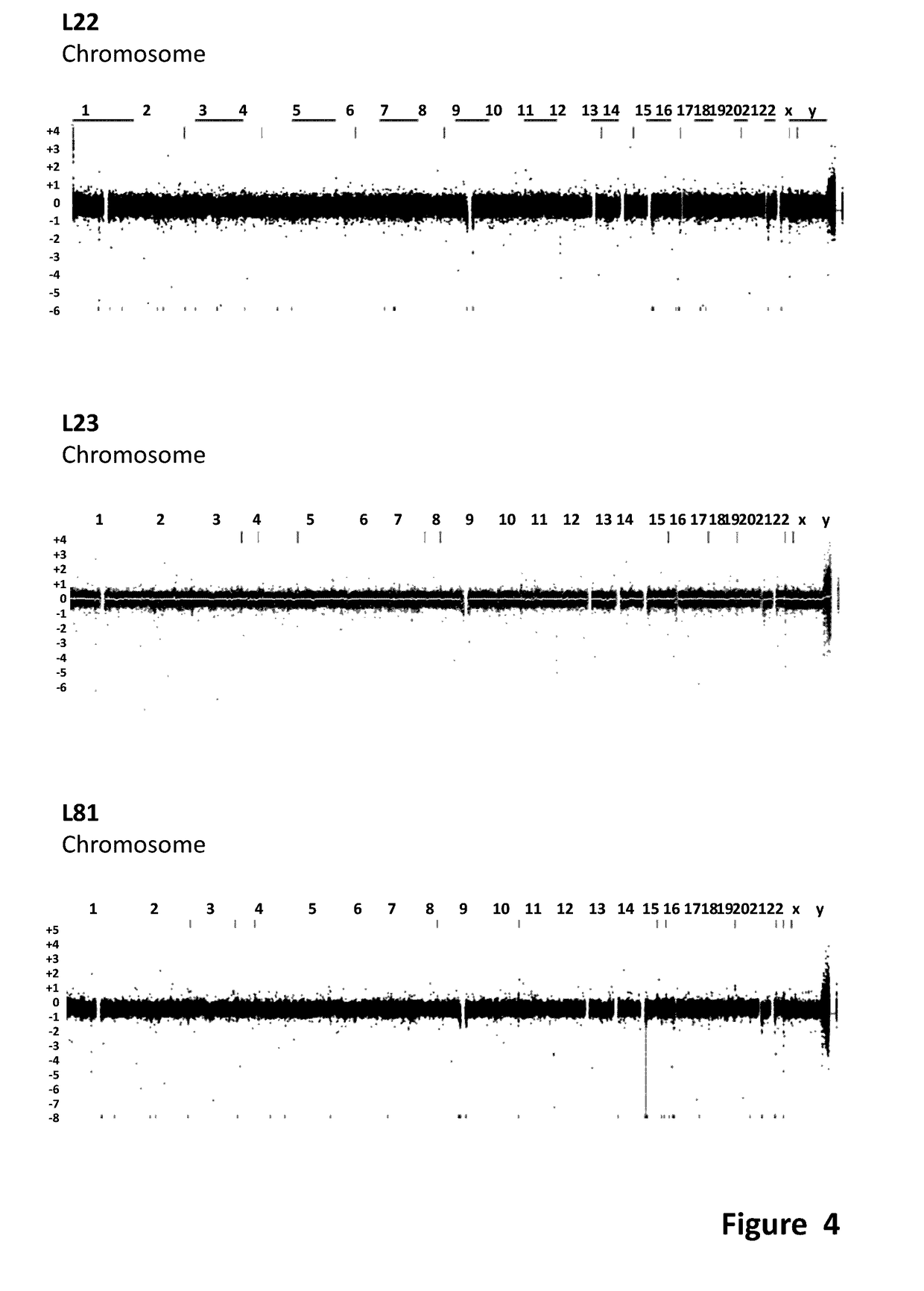Genetic correction of myotonic dystrophy type 1
a myotonic dystrophy and gene therapy technology, applied in the field of genetic correction of myotonic dystrophy type 1, can solve the problems of affecting the use of dm1 primary cells, affecting the proliferation capacity of cells, and eventually dying out, and achieves limited proliferative capacity of primary dm1-derived cells, limited possible application for transplantation, and limited life-span.
- Summary
- Abstract
- Description
- Claims
- Application Information
AI Technical Summary
Benefits of technology
Problems solved by technology
Method used
Image
Examples
example 1
n of iPS Cells from DM1 Patient Cells
[0180]Human iPS cells were derived from myoblast cells from DM1 patients with extensive CTG repeats and from fibroblast of normal donors. For patient details see Table 2. The DM1 iPS cells were generated from skeletal myoblasts obtained from a 46 year old female suffering from DM1 with clinical manifestation of ptosis, slight atrophy, weakness of distal muscle, neckflexors and facial muscles; myotonia; cataract; ECG conduction abnormalities and daytime somnolence. This patient was selected because of the presence of expanded 1250 CTG repeats and because she manifested a severe DM1 phenotype. From a population of DM1 iPS colonies generated from this patient, three distinct iPS clones were selected and isolated for further expansion for subsequent characterizations experiments and for extensive characterization of the DM1 phenotype in differentiated and non-differentiated iPS cells. These expanded clones were designated as L22, L23 & L81, as shown ...
example 2
rdiomyogenic and Myogenic Differentiation of iPS from DM1 Patient Cells
[0198]Coaxed myogenic differentiation was induced in human iPS cells derived from cells of normal (healthy) subjects or DM1 patients, making it possible to study the effects of the mutated DMPK gene on myocardial differentiation and functionality.
[0199]The DM1 iPS clones were expanded and subsequently subjected to myogenic differentiation. For the myogenic differentiation, we follow a 5-step feeder-free differentiation procedure (Tedesco et al. (2012) Sci Transl Med 4, 140ra89); see also FIG. 7. The differentiation protocol was carried out using iPS cells cultured on inactivated feeder cells (inactivated MEF) as per the protocol published by Tedesco et al. (2012). We also used iPS cells cultured on feeder free condition to differentiate by the same protocol. For the clone DM1 L81, DM1 L23 and Control iPS we generated HIDEMs derived from iPS cells cultured both under feeder free and feeder (inactivated MEF) condit...
example 3
oci Staining Experiment on DM1 L81 iPS Corrected with dTALEN
[0203]In this experiment, iPS cells derived from DM1 patient were used and iPS cells derived from normal donor were used as control. In order to obtain genetic correction of the expanded CTG repeats in the patient cells, the dTALEN genome-editing tool was used. The dTALEN approach as a ‘molecular scissors’ in combination with a donor molecule was used to specifically target the DMPK gene. Two dTALENs were designed to bind at the appropriately spaced positions of the complementary DMPK strands in order for the FokI to generate a double-strand break in the DMPK gene. A donor molecule (or homology molecule) containing a puromycin expression cassette flanked by left and right homology arms was used for homologous recombination (FIG. 14). The donor molecule incorporated a polyA tail, which prevents transcription of downstream sequences (i.e. the CTG repeats). The donor molecule is as set forth in SEQ ID NO: 7. The left homology ...
PUM
| Property | Measurement | Unit |
|---|---|---|
| humidity | aaaaa | aaaaa |
| humidity | aaaaa | aaaaa |
| time | aaaaa | aaaaa |
Abstract
Description
Claims
Application Information
 Login to View More
Login to View More - R&D
- Intellectual Property
- Life Sciences
- Materials
- Tech Scout
- Unparalleled Data Quality
- Higher Quality Content
- 60% Fewer Hallucinations
Browse by: Latest US Patents, China's latest patents, Technical Efficacy Thesaurus, Application Domain, Technology Topic, Popular Technical Reports.
© 2025 PatSnap. All rights reserved.Legal|Privacy policy|Modern Slavery Act Transparency Statement|Sitemap|About US| Contact US: help@patsnap.com



